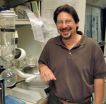(Press-News.org) CHAMPAIGN, lll. — A farmer in Niger learns how to protect his crops from insects. A resident of Port-au-Prince or a rural Haitian village learns how to avoid exposure to cholera. An entrepreneur in Mali gets step-by-step instructions on extracting the oil from shea seeds to make shea butter she can sell at a local market.
These people are benefiting from a new approach to sustainable development education that reaches a much larger audience than traditional methods – and at a fraction of the cost. The initiative, led by a team of extension educators and faculty at the University of Illinois, produces animated educational videos that people around the world can watch at home, over and over again, on their cell phones.
"This is a very different paradigm from some other current development projects, where U.S.-based educators are flown to another part of the world, interact with people in the field for a few weeks to several months, and leave," said University of Illinois entomology professor Barry Pittendrigh, a member of the team that is developing the animations. "From a financial perspective, this is a much cheaper way to do international development." (Watch a video about the project.)
The initiative, Scientific Animations Without Borders, takes advantage of the widespread availability of cell phones in the developing world. According to recent research, nearly 60 percent of the 2.4 billion cell phone users in the world live in developing countries.
As of 2006, more than 150 million cell phone users lived in Africa, for example, with cell phone technology spreading faster there than anywhere else in the world.
Animation reduces the costs associated with making a video on a particular topic, and allows the videos themselves to have near-universal appeal. The videos are narrated, and the narration can be recorded in any language with any dialect or accent.
"The way these animated videos are designed, they can be easily adapted to other cultures," said Julia Bello-Bravo, a University of Illinois field extension specialist and leader of the project. "We are also capturing indigenous knowledge and putting it into the video, so when they see the video it is familiar to them."
The first animated videos developed by the Illinois team (with funding from the Dry Grain Pulses CRSP - U.S. Agency for International Development and created in collaboration with aid workers and farmers in West Africa) demonstrate safe insect-control methods that are already in use in some regions. The scientifically validated techniques make use of local plants or widely available materials – such as black plastic sheets, ashes, or plastic bags – to control or eradicate insect pests from cowpeas, a staple in many parts of Africa, Asia, and Central and South America.
In one video, a farmer processes the fruits of the neem tree (Azadirachta indica) to make a liquid insecticide that he sprays on his cowpea crop. The neem is a drought-tolerant tree found in Southeast Asia and parts of Sub-Saharan Africa. Farmers working with extension educators in West Africa developed the methods depicted in the video, Bello-Bravo said. Scientific studies had validated the methods and the materials needed were cheap and widely available, she said. But explaining the technique to large numbers of people would be difficult and costly.
"In Mali they are using this technique and it's very effective, but in Burkina Faso, for example, there are not many people using this technique," she said. "If we can show these animated videos in different parts of West Africa where this tree grows, we can get the information to many, many more people."
A newer video demonstrates how to boil or treat water to avoid exposure to cholera. This video is available in English, French, Haitian Creole and other languages.
The process of producing the videos is fairly fast and cheap. Communicating primarily via e-mail, aid workers, farmers, entrepreneurs and an animator collaborate on the videos with the Illinois team. Once the content is approved, the collaborators produce two scripts: one to be read by a narrator and the other describing the actions the animated character is to perform. The animator builds the animation in stages with input from the collaborative team. Once a video is complete, the voice-over narration can be swapped out to match that of a particular country or region.
In this way, the team is building a library of educational videos that can be distributed around the world via e-mail or through the sustainable development website, SusDeViki.
Future videos will touch on other agricultural or health issues, such as bed bugs, lice or malaria, and will target viewers in the developed and developing world.
INFORMATION:
The team at Illinois also includes extension educator Francisco Seufferheld and entomology department graduate students Tolulope Agunbiade and Laura Steele, with technical assistance from Martin Booth Hodges. The group collaborates most closely with on-site field educators in Benin, Burkina Faso, Mali, Niger, and Nigeria. They are also collaborating with Madhu Viswanathan on animations for marketplace literacy. The team works with an international cell phone deployment network through Kathleen Robbins. Daniel Guillot heads the animation team.
Editor's note: To contact Barry Pittendrigh, call 217- 244-0567; e-mail pittendr@illinois.edu. To reach Julia Bello-Bravo, call 217-333-4735; e-mail juliabb@illinois.edu.
Team delivers development aid via cell phone animations
2011-03-01
ELSE PRESS RELEASES FROM THIS DATE:
A grudge match between humanity and death -- who wins?
2011-03-01
FAIRFAX, Va., February 28, 2011—Death can be terrifying. Recognizing that death is inescapable and unpredictable makes us incredibly vulnerable, and can invoke feelings of anxiety, hatred and fear. But new research by George Mason University psychology professor Todd Kashdan shows that being a mindful person not only makes you generally more tolerant and less defensive, but it can also actually neutralize fears of dying and death.
"Mindfulness is being open, receptive, and attentive to whatever is unfolding in the present moment," says Kashdan. In his latest research, ...
New marker found for Sanfilippo disease
2011-03-01
Sanfilippo disease is a rare disorder caused by the failure of enzymes to break down specific kinds of complex carbohydrates, resulting in their accumulation in cells and often severe physical and neurological problems – and sometimes early death.
In a paper published in the March 4 issue of the Journal of Biological Chemistry, researchers at the University of California, San Diego School of Medicine, led by Jeffrey D. Esko, PhD, professor in the Department of Cellular and Molecular Medicine, describe the build-up of a novel secondary metabolite in Sanfilippo disease, ...
WSU researcher creates patented personalized therapy that causes cancer cells to kill themselves
2011-03-01
A Wayne State University School of Medicine physician-researcher has developed a personalized therapy to treat a wide range of cancers. The treatment is based on a naturally occurring human enzyme that has been genetically modified to fool cancer cells into killing themselves.
The unique concept, patented by Wayne State University, was successfully demonstrated on melanoma cells that are resistant to routine treatments such as chemotherapy or radiotherapy. Melanoma is a perfect model for testing this new therapy because it is considered the most aggressive form of human ...
Human stem cells from fat tissue fuse with rat heart cells and beat
2011-03-01
If Dr. Doolittle is famous for talking to animals, then here's a story that might make him hold his tongue: According to new research published online in The FASEB Journal (http://www.fasebj.org), scientists have successfully fused human stem cells derived from subcutaneous adipose (fat) tissue with muscle cells from rat hearts. Not only did these cells "talk" to form new muscle cells altogether, but they actually beat.
"Recovery of regenerative cells located in the stromal vascular fraction of a patient's own subcutaneous tissue is relatively simple and can be used for ...
University of Maryland School of Medicine study identifies genes associated with binge drinking
2011-03-01
University of Maryland School of Medicine researchers have identified two genes associated with binge drinking that may open doors to new, more effective treatments for excessive alcohol drinking. The scientists found that manipulating two receptors in the brain, GABA receptors and toll-like receptor 4 (TLR4), "caused profound reduction" of binge drinking for two weeks in rodents that had been bred and trained to drink excessively. The study was published online the week of Feb. 28 in the journal the Proceedings of the National Academy of Sciences.
About 30 percent of ...
Intervention helps women manage weight during and after pregnancy
2011-03-01
PROVIDENCE, R.I. [Brown University] — Excessive weight gain isn't healthy at any stage of life, but during pregnancy it can do lasting harm to the mother and baby alike. Now researchers at Brown University and The Miriam Hospital are encouraged by a new study describing an intervention that helped pregnant women control their weight.
"This study suggests that a lifestyle intervention can help women manage their weight during pregnancy, prevent health problems during pregnancy, and reduce weight retention after having a baby," said study lead author Suzanne Phelan, adjunct ...
Gay rights movement born in 19th century Germany, scholar says
2011-03-01
Same-sex erotic relationships are as old as humanity, but our modern understanding of what it means to be homosexual—and the earliest gay rights movement—started in nineteenth-century Germany, according to an article by historian Robert Beachy from Goucher College.
The article, "The German Invention of Homosexuality," is published in a recent issue of The Journal of Modern History. Beachy's book on the subject, Gay Berlin: Birthplace of a Modern Identity (Knopf), is due out next year.
According to Beachy, modern conceptions of homosexuality began, ironically, with an ...
New peptide could be effective treatment for triple negative breast cancer
2011-03-01
A new peptide developed by researchers in Temple University's College of Science and Technology has demonstrated efficacy against triple negative breast cancer.
The leptin receptor antagonist peptide, developed by researchers Laszlo Otvos and Eva Surmacz, could become an attractive option for triple negative breast cancer treatment, especially in the obese patient population. The researchers published their findings online in the European Journal of Cancer.
According to the researchers, triple-negative breast cancers—which represent 10 percent of all mammary ...
Development team achieves 1 terabit per second data rate on a single integrated photonic chip
2011-03-01
WASHINGTON, Feb. 28—With worldwide Internet data traffic increasing by 50 percent each year, telecommunications companies that handle this digital torrent must be able to economically expand the capacities of their networks while also adapting to new, more-efficient data-handling technologies. Over the last decade, a development team at Infinera Corp. in Sunnyvale, Calif. has pioneered the design and manufacture of photonic integrated circuits (PICs) aimed at meeting that need. This technology has enabled the team to achieve a record one trillion bits per second (1 Terabit/s) ...
Researchers develop curious snapshot of powerful retinal pigment and its partners
2011-03-01
BETHESDA, Md., Feb. 28, 2011 – Science fiction novelist and scholar Issac Asimov once said, "The most exciting phrase to hear in science, the one that heralds new discoveries, is not 'Eureka!' but 'That's funny.' " This recently rang true for an international team of researchers when they observed something they did not expect.
In a Journal of Biological Chemistry "Paper of the Week," the Berlin-based team reports that it has uncovered surprising new details about a key protein-protein interaction in the retina that contributes to the exquisite sensitivity of vision. ...


